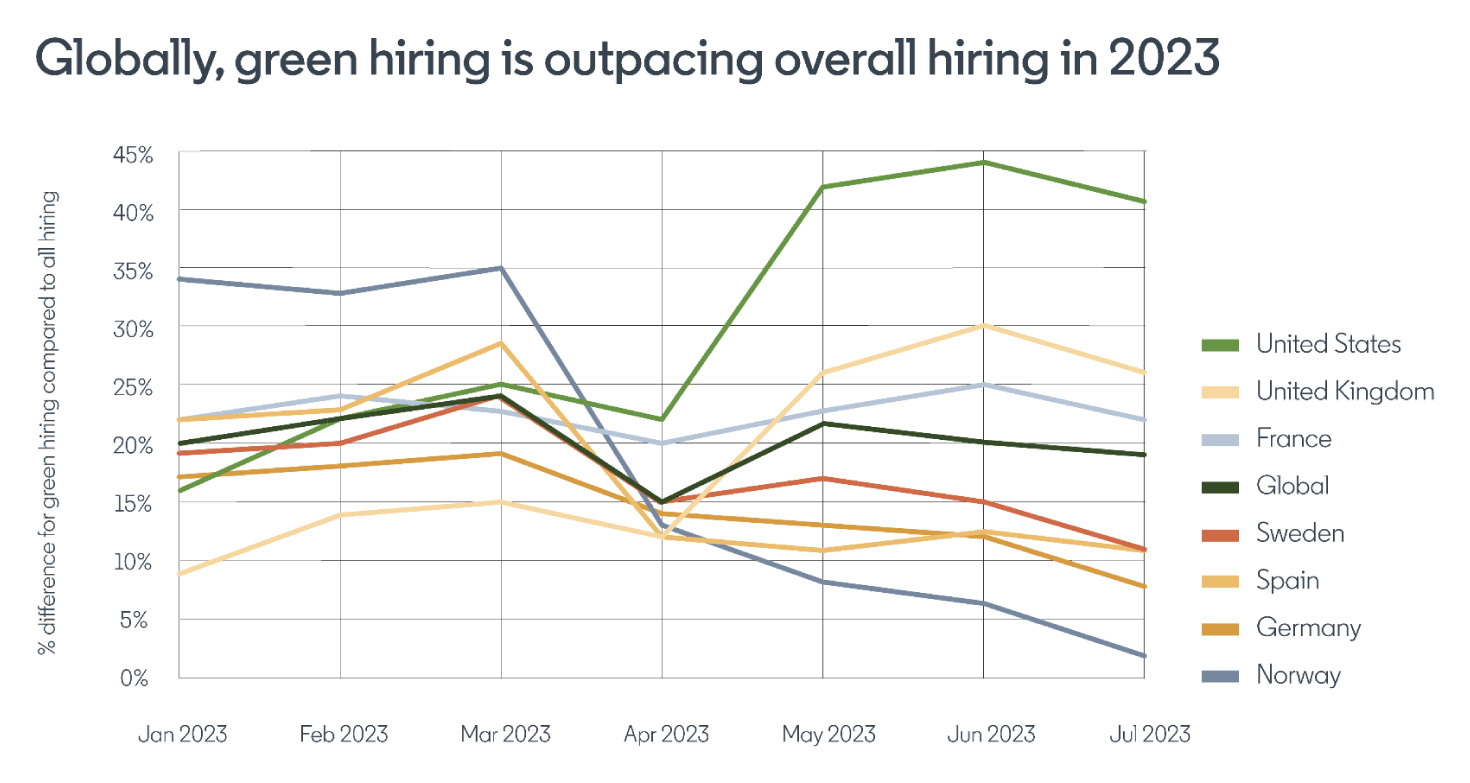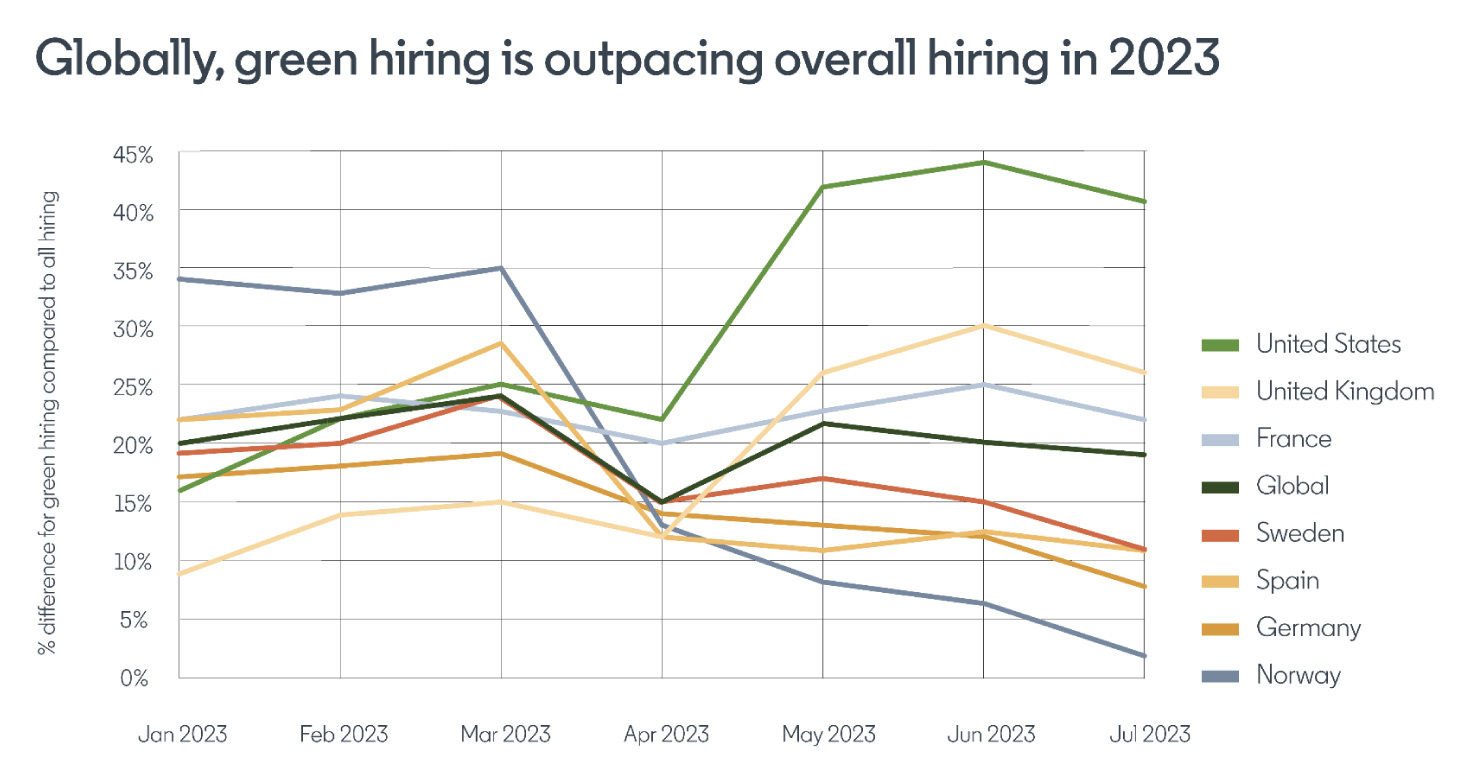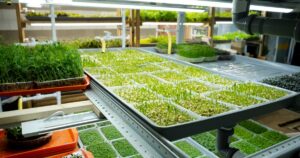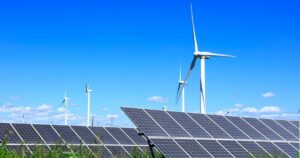The number of people employed in the energy sector is growing fast, as demand for solar, wind and other clean energy technologies has soared in all regions of the world.
Data published last week by the International Energy Agency (IEA) reveals that more than 67 million people were employed in the energy sector in 2022, an increase of 3.4 million on 2019 levels.
The report confirms that clean energy sectors powered the growth in energy industry jobs, with the number of clean energy workers rising by 4.7 million since 2019 to over 35 million people.
In contrast, jobs in the fossil fuel industry have recovered more slowly following pandemic-related layoffs and now sit at 32 million roles. As such, 1.3 million fewer people were employed in the coal, oil, and gas sectors in 2022 compared to 2019.
Growth in clean energy jobs occurred in every region, but was most pronounced in China.
China leads the way
Solar PV, wind, electric vehicles and batteries, heat pumps and critical minerals were collectively responsible for more than half of energy sector employment growth between 2019 and 2022. Together, the five sectors employ around 9 million people, of which solar PV accounts for almost half, at 4 million.
The IEA said the growth in clean energy jobs occurred in every region, but was most pronounced in China, which remains home to the world's largest energy workforce. It also noted that across the five clean energy "growth" sectors, batteries and EVs saw the most rapid employment growth, adding more than 1 million jobs since 2019.
The organization's updated Net Zero Roadmap, published in September, predicted that 30 million new clean energy jobs would be created by 2030, while 13 million jobs are expected to be lost in fossil fuel-related industries by the same date.
But alongside the positive trends, the IEA raised fresh alarms that a major skills shortage could hamper the growth of clean energy and clean energy-affiliated sectors.
Construction-related occupations are set to face particularly acute skills shortages, limiting the availability of labor to install clean energy technologies and retrofit buildings, according to the analysis.
The IEA forecasts half the new job openings in clean energy-related sectors between now and 2030 to be in construction.
The IEA forecasts half the new job openings in clean energy-related sectors between now and 2030 to be in construction.
The green skills gap
The IEA findings echo new data released by LinkedIn on Nov. 21.
The world faces a significant and widening green skills gap, the professional network found; the global workforce lacks the sustainability professionals and clean tech experts required to meet surging demand across numerous countries and industries.
Green hiring continues to surge, and is significantly outpacing overall recruitment for in key markets around the world. According to the update, the average global green hiring rate peaked at 24 percent above the overall market rate this year.

![]()
![]()
![]()
![]()
But the LinkedIn research casts doubt on businesses' ability to fill these roles.
"There aren't enough people with the skills needed to meet our climate needs," said Efrem Bycer, senior lead manager of public policy and economic graph at LinkedIn. “Only 1 in 8 workers globally have the green skills needed to drive the green transition. And while the number of jobs requiring at least one green skill grows at 9.2 percent per year, the number of workers with at least one green skill only grows at 5.4 percent per year."
IEA executive director Fatih Birol urged governments to work with business to upskill and reskill workers for the energy transition.
"The unprecedented acceleration that we have seen in clean energy transitions is creating millions of new job opportunities all over the world — but these are not being filled quickly enough," he said. "Governments, industry and educational institutions need to put in place programs to deliver the expertise needed in the energy sector to keep pace with growing demand, particularly to manufacture and build the clean energy projects necessary to meet our energy and climate goals."
- SEO Powered Content & PR Distribution. Get Amplified Today.
- PlatoData.Network Vertical Generative Ai. Empower Yourself. Access Here.
- PlatoAiStream. Web3 Intelligence. Knowledge Amplified. Access Here.
- PlatoESG. Carbon, CleanTech, Energy, Environment, Solar, Waste Management. Access Here.
- PlatoHealth. Biotech and Clinical Trials Intelligence. Access Here.
- Source: https://www.greenbiz.com/article/green-skills-gap-widening
- :has
- :is
- :not
- 1
- 1.3
- 13
- 15%
- 2019
- 2022
- 2030
- 24
- 30
- 32
- 35%
- 67
- 7
- 8
- 9
- a
- ability
- above
- acceleration
- According
- Accounts
- across
- acute
- adding
- agency
- All
- almost
- alongside
- also
- an
- analysis
- and
- ARE
- around
- AS
- At
- availability
- average
- batteries
- BE
- being
- between
- build
- business
- businesses
- but
- by
- Chart
- China
- clean
- clean energy
- click
- Climate
- Coal
- collectively
- compared
- construction
- continues
- contrast
- could
- countries
- created
- Creating
- critical
- data
- Date
- deliver
- Demand
- Director
- doubt
- drive
- echo
- Economic
- educational
- Electric
- electric vehicles
- employed
- employment
- energy
- energy projects
- enough
- Ether (ETH)
- Every
- evs
- executive
- Executive Director
- expected
- expertise
- experts
- Face
- faces
- FAST
- fewer
- fill
- filled
- findings
- five
- following
- For
- forecasts
- fossil
- Fossil fuel
- found
- fresh
- from
- Fuel
- gap
- GAS
- Global
- Globally
- Goals
- Governments
- graph
- Green
- Growing
- Grows
- Growth
- Half
- Have
- he
- Hiring
- Home
- HTTPS
- IEA
- in
- Increase
- industries
- industry
- install
- institutions
- International
- IT
- Job
- Job Opportunities
- Jobs
- jpg
- Keep
- Key
- labor
- largest
- Last
- layoffs
- lead
- Leads
- least
- levels
- lost
- major
- manager
- Market
- Markets
- Meet
- million
- millions
- minerals
- more
- most
- move
- necessary
- Need
- needed
- needs
- net
- network
- New
- noted
- nov
- Nov. 21
- now
- number
- numerous
- occurred
- of
- Oil
- on
- ONE
- only
- openings
- opportunities
- organization
- Other
- our
- over
- overall
- Pace
- particularly
- People
- per
- percent
- Place
- plato
- Plato Data Intelligence
- PlatoData
- policy
- positive
- powered
- predicted
- presentation
- professional
- professionals
- Programs
- projects
- pronounced
- public
- published
- pumps
- put
- quickly
- raised
- rapid
- Rate
- recruitment
- region
- regions
- released
- remains
- report
- required
- research
- responsible
- Reveals
- rising
- roadmap
- roles
- s
- Said
- same
- saw
- sector
- Sectors
- seen
- senior
- September
- set
- shortage
- shortages
- significant
- significantly
- since
- sit
- skill
- skills
- skills gap
- Slowly
- soared
- solar
- such
- surge
- surging
- Sustainability
- T
- tech
- Technologies
- than
- that
- The
- the world
- There.
- These
- this
- this year
- to
- together
- transition
- transitions
- Trends
- unprecedented
- Update
- updated
- Vehicles
- was
- we
- week
- were
- which
- while
- wind
- with
- Work
- workers
- Workforce
- world
- would
- year
- zephyrnet
- zero












